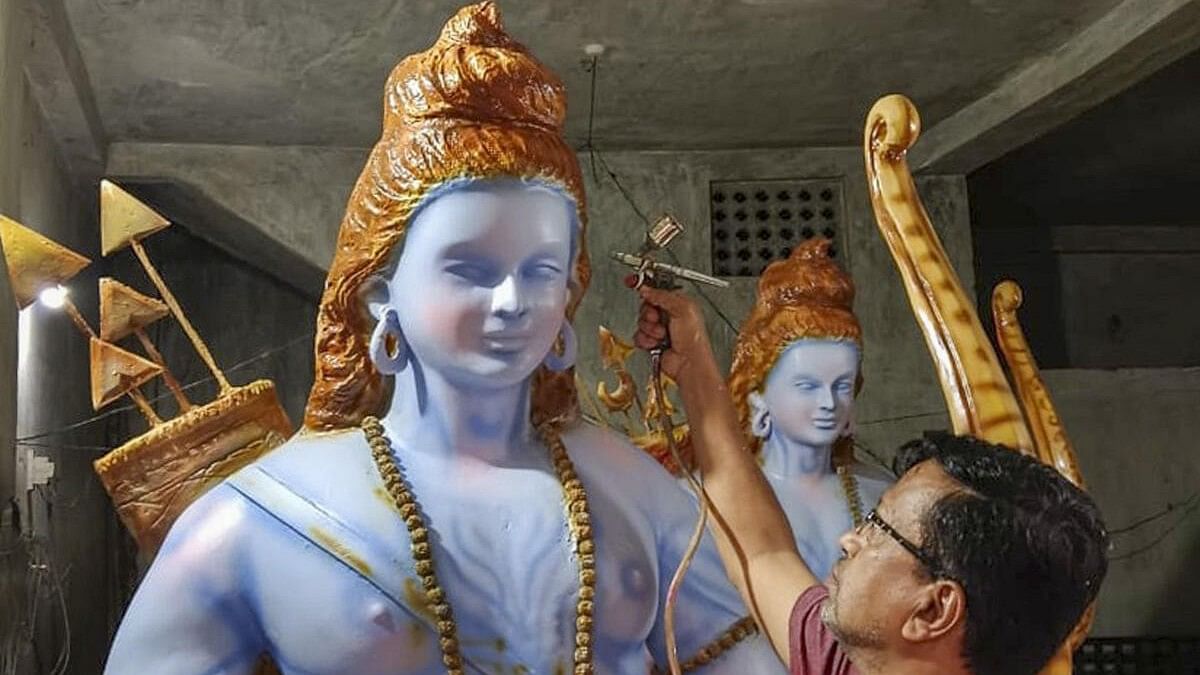
An artist gives final touches to a Lord Ram statue.
Credit: PTI Photo
In yet another incident of mythology crusading against history, a Punjab village named Gharram, located around 18 km from Patiala, that is immersed in preparations for the Ayodhya event on January 22 believes that Lord Ram was born there.
The residents of this small village have grown up hearing stories about their village's connection to Lord Rama, stories that blur the distinction between myth and historical facts.
According to the villagers, numerous books mention that Raja Dashrath's wedding procession passed through Gharram, where he married the Maharaja's daughter, Kaushalya, and Rama was born in his maternal grandfather's palace located in the village. Gharram still preserves some historical remnants and the villagers desire recognition for their village, which holds significant ties to ancient Hindu mythology, reported Tribune.
One such publication, titled Patiala and its Historical Surroundings, published by Punjabi University, Patiala in 1969, claims that "Patiala can lay some claim to Lord Rama."
Although they have not yet received an official invitation, they anticipate that the village will be recognised during the ceremonies in Ayodhya.
Gurmeet Singh, a 56-year-old former panchayat member, shared these sentiments with the publication. According to Singh, this belief —that Lord Rama was born in their village, specifically in the palace of his maternal grandfather, Maharaja Khoh Ram, rather than in Ayodhya —has been passed down through generations.
Dr Param Bakhshish Singh, former Head of the Department of Punjab Historical Studies at Punjabi University, acknowledged the villagers' association with Lord Rama and emphasised the need for further 'research' to substantiate their claim.
An ancient fort, in ruins, stands in the village now and there have been previous 'excavation' attempts to historicise the mythology.
Manmohan Kumar, a former head of the Department of History at Maharshi Dayanand University, Rohtak, mentions his involvement in an excavation at Gharram during 1975-77. Although direct links to the Ramayana could not be established, the excavation yielded centuries-old artifacts.
Furthermore, there is some land that, according to records, is still registered under the name of Luv-Kush, the sons of Lord Rama.